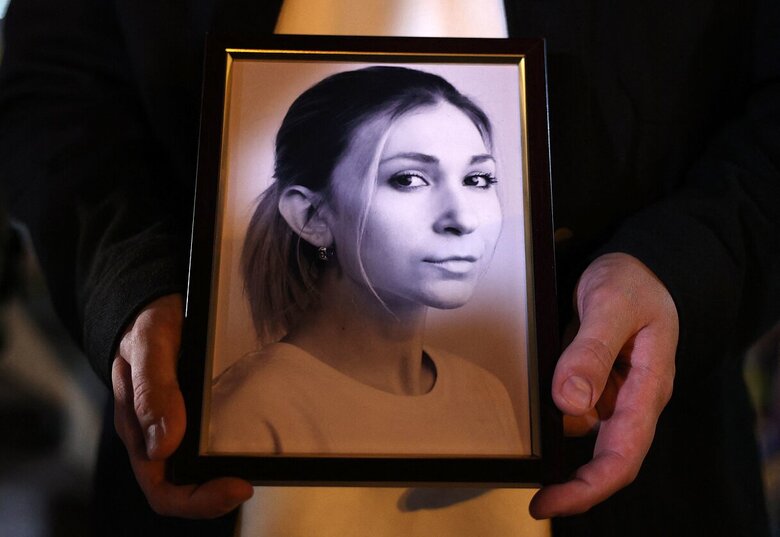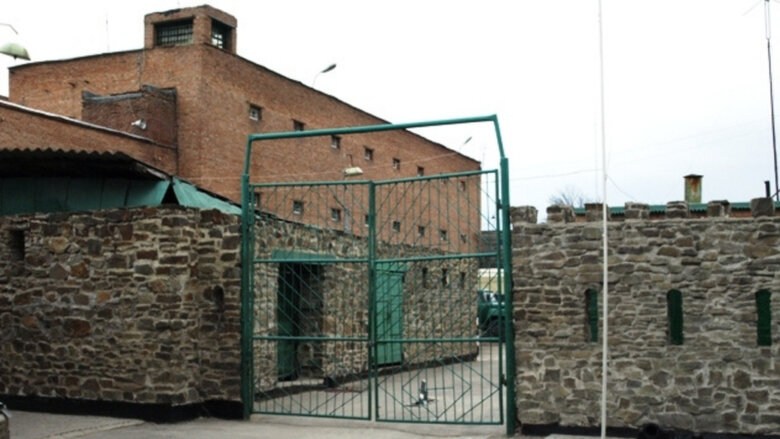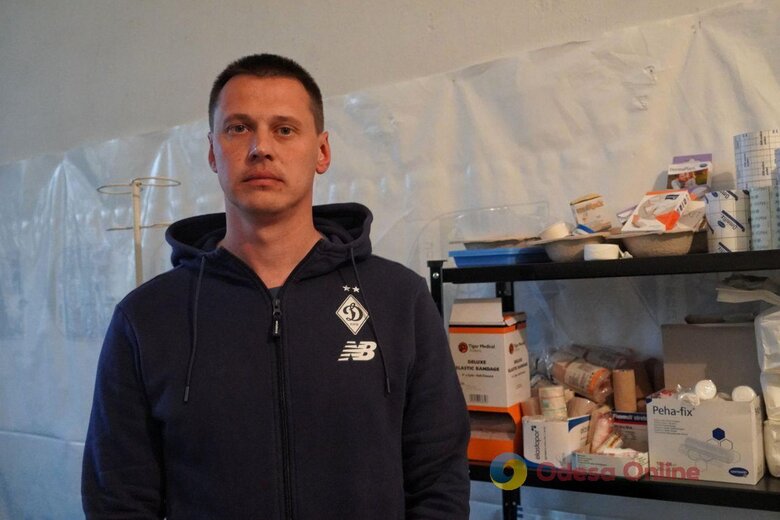PRE-TRIAL DETENTION CENTRE No. 2. Taganrog – place where Viktoriia Roshchyna was killed and thousands of Ukrainians are being tortured
Ukrainian journalist Viktoria Roshchyna was tortured by Russians in pre-trial detention centre No. 2 in Taganrog. This is the result of an international investigation involving 13 leading international media outlets.
Among them are Forbidden Stories, The Guardian , The Washington Post, Le Monde, Die Zeit, Der Spiegel, ZDF, Paper Trail Media, IStories, France 24, "Ukrainska Pravda", DerStandart.
Forbidden Stories is a French editorial office that continues the work of journalists who have been killed, imprisoned or persecuted for their professional activities.
Victoria Roshchyna disappeared in the occupied territories in August 2023. Before that, she took a minibus to Poland and then travelled to russia via Lithuania with her own passport.
Victoria collected materials about what was happening in Russian torture chambers in the occupied territories. She went to Zaporizhzhia region, where, according to her cellmate in Taganrog, she was detained.
According to a journalistic investigation, she spent some time in the "garages" of Melitopol, and most of 2024 was in the Taganrog Detention Centre-2.
Only in April 2024 Russia officially confirmed that Victoria was in captivity. Many people were involved in her return and even appealed to Pope Francis. But very soon after this appeal, on 10 October, her father Volodymyr Roshchyn received a letter that his 27-year-old daughter had died.
On 14 February 2025, an exchange took place, as part of which 757 bodies were transferred to Ukraine. Some of them were sent for examination in Vinnytsia.
In particular, the last body, labelled "unknown male", went there. But when the second bag was opened, it was labelled 'Roshchyna V.V.'. The body also contained a SPAS tag.
In order to understand what SPAS was, the investigators thoroughly checked Russian databases and references on the Internet. Among the options were a funeral home, an NGO that dealt with drug addicts and homeless people. Another option was the Russian Ministry of Emergency Situations, as they have a unit with the same name and Russian employees of the Ministry of Emergency Situations were sometimes involved in exchanges.
But the "clue" was different. As the former Commissioner for Persons Missing in Special Circumstances, Oleh Kotenko, explained to the participants of the investigation, this is a fairly common abbreviation. SPAS means "total damage to the heart arteries". And the Russians often hand over the bodies of Ukrainians with this note to hide the true causes of death.
In an interview with The Guardian, Volodymyr Labuzov, a military medic with the 36th Brigade of the National Guard, said that bodies are often returned without organs to hide torture.
Apparently, the same thing happened to Victoria's body.
According to the head of the War Department of the Prosecutor General's Office, Yurii Belousov, numerous signs of torture and ill-treatment were found on Roshchyna's body, including abrasions and bleeding on various parts of the body, and a broken rib. The experts also saw possible signs of electric shock.
"The injuries were inflicted during her lifetime. Therefore, it is highly likely that torture was used against her (Victoria Roshchyna - ed.)," Belousov said, as quoted by Ukrainska Pravda.
The investigative team conducting the investigation confirmed to the project that the body was brought to Ukraine with signs of an autopsy performed in Russia. The "Victoriia" Project has also learned from its interlocutors in law enforcement agencies that some internal organs were missing.
In particular, the brain, eyeballs, and part of the trachea.
An international expert pathologist interviewed by the project's journalists believes that the absence of these organs may indicate that the Russians were trying to hide the fact that the death was caused by strangulation.
Viktoria Roshchyna was most likely killed in the 2nd pre-trial detention centre in the Russian city of Taganrog.
This particular prison is one of the key detention centres for "naughty" Ukrainians. It was there that captured "Azov" and 36th National Guard Brigade fighters were first sent, and later civilians from Kherson and Zaporizhzhia regions who were suspected of helping the Ukrainian military were also "received".
The soldiers were transferred to Taganrog mostly from Olenivka. Their eyes were taped over, their hands tied, and they were thrown into the car in a "herringbone" formation, where a soldier sits on the floor with his legs spread and another is pushed to him. They were driven to Taganrog in such a human huddle for almost a day.
At the reception, they were beaten so badly that not all of them survived until the morning.
Polyester robes and trousers were given to them and they were thrown into cold cells, where they were joined by bedbugs, cockroaches and mice. The mice didn't last long, though, and there was nothing to eat. The prisoners of war's portion was mostly 200-300 grams of some kind of slop, mostly made of cabbage. Sometimes porridge and vermicelli, to which fish with bones and giblets were added. Prisoners lost up to 30 kg of weight.
Victoria Roshchyna weighed 30 kg. At one stage, she refused to eat and was even sent to hospital.
For most of the prisoners in Taganrog, this option was not available either. Basically, there were only some paramedics there who did not provide assistance to the prisoners. At best, they were given a single pill for all occasions. In all other cases, they were offered to be treated with tea. Although they gave very little warm liquid. Therefore, the prisoners had to drink water from the tap, which had obvious signs of technical and oil film.
At best, the prisoners were allowed to shower or go for a walk only once every two weeks. Every time they moved, they were beaten. They had to walk half-bent over and could only look with one eye to avoid being killed.
The walk in the concrete cube itself lasted no more than 3 minutes.
"But since it was accompanied by beatings and humiliation, I didn't want to leave at all. In addition, there was the so-called "reception" - a check when twice a day you are taken out of the cell by their special forces, and they either beat you or force you to stand in stretches. It's actually a twine, which not everyone can sit on, but they kick you until you do. The girls are crying, falling down, and at the same time they are searching your camera, looking for something, trampling on your things," recalls Valeria Subotina, a press officer with "Azov".
This is just an incomplete list of torture recorded in interviews with prisoners by journalists working for the Victoriia project:
- daily beatings during cell checks;
- beatings during interrogations - with hands, feet, sticks.
- letting the dogs down;
- electrocution with bare wires and "Putin's TA-57 telephone";
- burning palms;
- putting in the oven;
- watering with a fire hose in cold weather;
- threats of rape;
- being placed in a punishment cell where you cannot even sit down during the day;
- constant malnutrition.
At the same time, each interrogation turned into an endless session of beatings.
"During one of the interrogations, the investigator asked me to name my rank and position. But he didn't even listen to who I was... I was immediately hit on the head with a wooden hammer.
The investigator said: "Say something interesting so we can stop beating you," recalls Volodymyr Labuzov, a medic with the 36th Brigade.
He said that after that he was beaten with electric wires, a rubber truncheon and a chair leg.
Another time, Labuzov recalls, they burned his palms with a lighter. He was once taken to the boiler room and immersed up to his waist in a stove used to heat water, and then put on a table to cut meat in the kitchen, where he was threatened with a knife, according to The Guardian.
Other prisoners recalled psychological pressure, including forced ideological "re-education", forcing them to recite patriotic Russian poetry by heart, and constant threats of physical and sexual violence.
The cells were overcrowded: eight men were held in rooms designed for four. Labuzov also recalled another constant presence keeping an eye on the prisoners: "In all four cells I was in, there was a portrait of Putin," Labuzov told The Guardian.
"It is clear to me that torture is part of Russia's military policy and apparatus, both against Ukrainian civilians and prisoners of war," said Alice Edwards, the UN Special Rapporteur on Torture, in an interview with Forbidden Stories. "They are used in all territories occupied by the Russian Federation, in all types of detention facilities. This level of organisation can only be approved at the highest level."
Taganrog is just one of the prisons where Ukrainians are sent. But it is one of the most closed prisons. Neither letters nor parcels from relatives reach there. Moreover, lawyers do not get there. Even those who have been officially charged. For lawyers, the pre-trial detention centre only writes back that the prisoner does not need a lawyer.
Victoria Roshchyna's death has reminded us of what is happening to civilian prisoners in russia. As of 2025, more than 16,000 Ukrainian civilians are in Russian captivity.
These are official figures from the Ukrainian ombudsman, Dmytro Lubinets.
Only 168 of them were released. Some families have been waiting for their loved ones for 7 years.
Why are there so few releases? The exchange of captured civilians for prisoners of war is not provided for by international humanitarian law and the Geneva Conventions. If we start doing this, the Russians will simply pick up civilians in the occupied territories to take away their military.
At the same time, the treatment of civilians in Russian prisons is not much different from that of prisoners of war. They are subjected to the same abuse and torture, with minimal chances of exchange.
Tetiana Nikolaienko, Censor. NET




